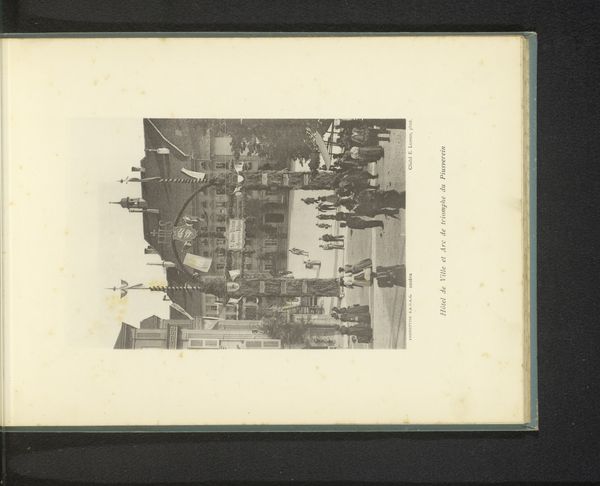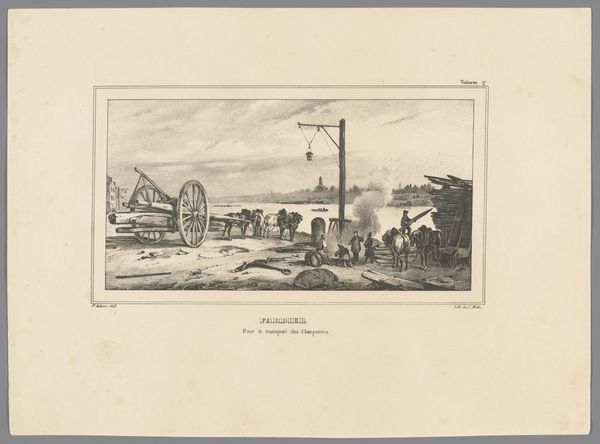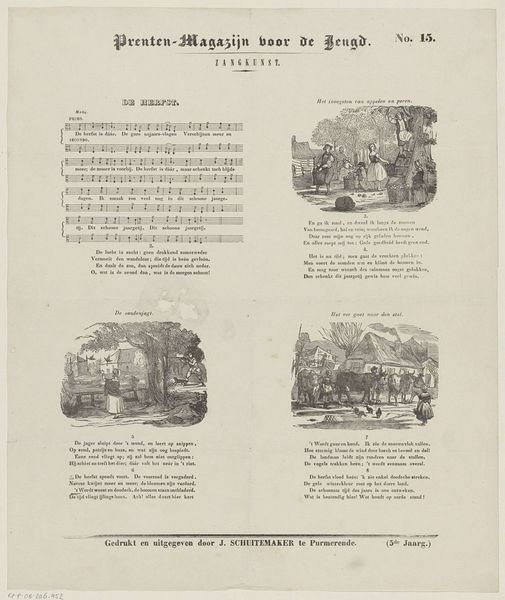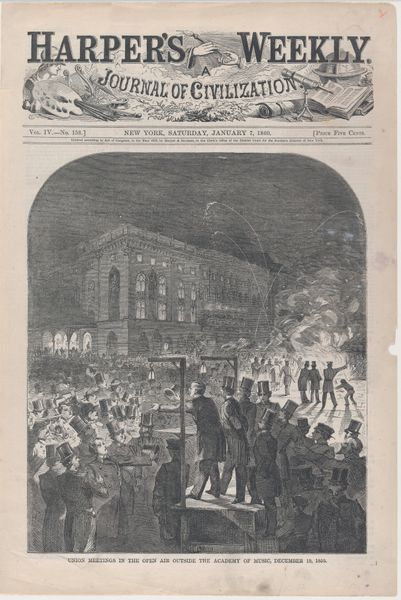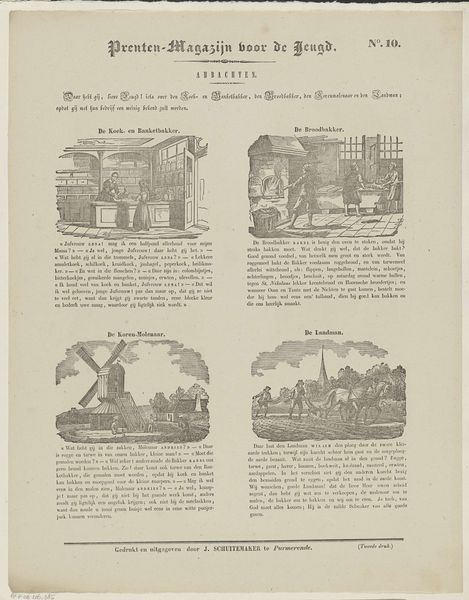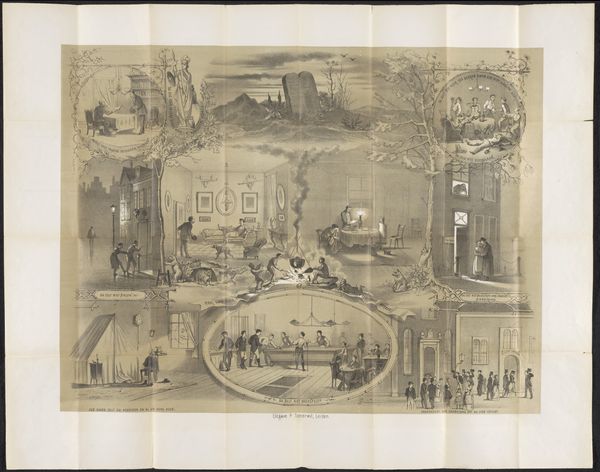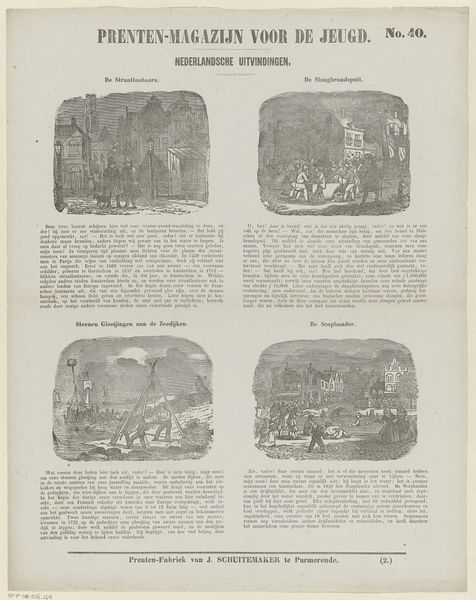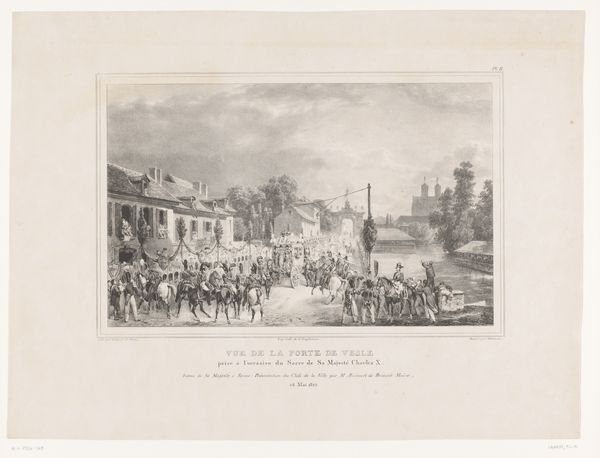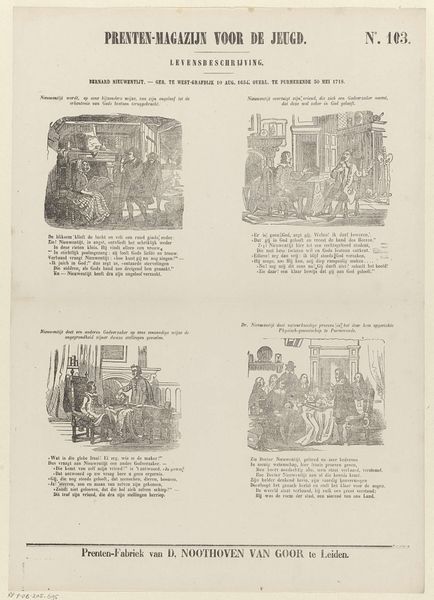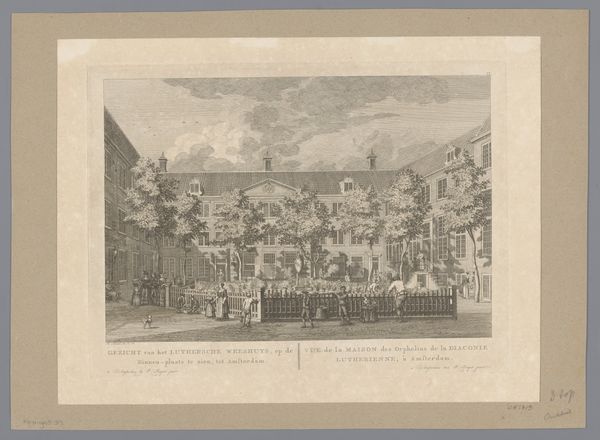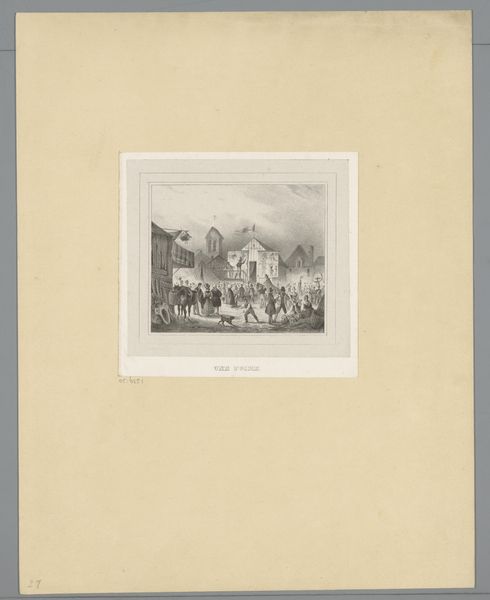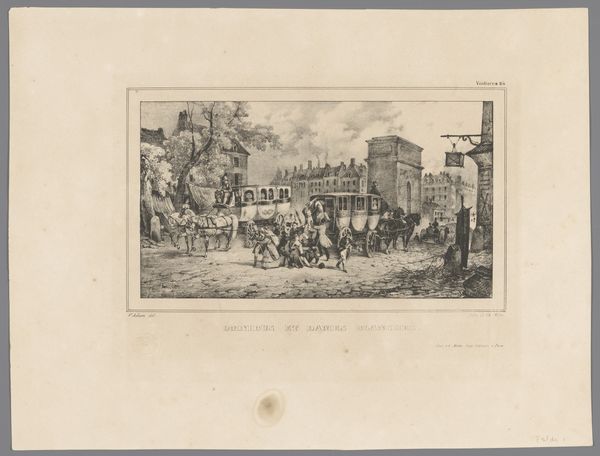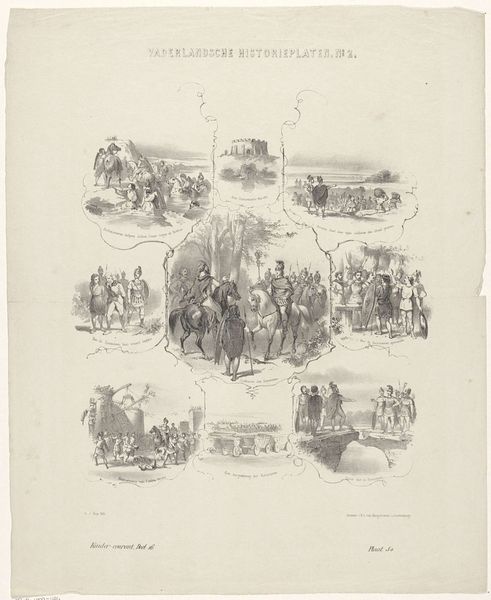
drawing, print
#
drawing
# print
#
landscape
#
figuration
#
romanticism
Dimensions: Sheet: 10 11/16 x 8 13/16 in. (27.1 x 22.4 cm)
Copyright: Public Domain
Curator: Welcome. Today, we are looking at "Chantier de Bois a Bruler," a print by Victor Adam, dating roughly between 1820 and 1866. Editor: Immediately, I’m struck by the precariousness of the whole scene, but also the very casual presence of the many individuals working here. Is this an everyday event or a disaster unfolding? Curator: I’d argue Adam’s skillful composition creates that tension. The eye is drawn upwards, tracing the precarious stack of logs, leading to the tiny figure perched atop. Consider the line, the shape of each carefully rendered piece of wood, repeated throughout this compact composition. Editor: But isn't that romanticization obscuring something darker? Looking closer, one sees not only a romantic landscape, but workers burdened with physical labour. This evokes questions about social and economic inequalities within the period, particularly for manual laborers. Curator: While I don’t discount a reading informed by socio-economic factors, let's look at what the artist has put forth: the dynamism, and contrast evident within the medium, whether it’s a lithograph or etching; this has its own independent meaning. The diagonal pull of the logs countered by the stability of the buildings in the distance creates spatial balance within a circle, further reinforcing a structural order. Editor: However, doesn't Adam present them more like objects within a larger, bustling ecosystem instead of the real working-class community this is? Curator: Even if we see the depicted population and landscape from contrasting perspectives, they are integral to understanding the impact. What meaning does this location, “Metropolitan Museum of Art,” offer today by showcasing art's value? Editor: The act of simply viewing transforms the meaning entirely. Adam’s composition and artistic method open the space for endless contemporary social and historical discourses within these confines. Curator: Yes, there's definitely an open ended meaning here!
Comments
No comments
Be the first to comment and join the conversation on the ultimate creative platform.
